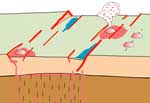 |
Continental rifting: analogue modeling and comparison with East African Rift System |
Giacomo Corti
Consiglio Nazionale delle Ricerche (CNR), Istituto di Geoscienze e Georisorse (IGG), UOS Firenze, Via G. la Pira 4, 50121 Firenze, Italy, giacomo.corti@unifi.it
This webpage is a summary of: Corti, G., Evolution and characteristics of continental rifting: Analog modeling-inspired view and comparison with examples from the East African Rift System, Tectonophysics, 522-523,1-33, 2012.
Introduction
Recently our understanding of rifting and rupture of continental plates has greatly improved, thanks to geological-geophysical data acquired at both volcanic (e.g., North Atlantic continental margins) and non-volcanic (e.g., Iberia-Newfoundland) passive margins and active continental rifts (e.g., Main Ethiopian Rift, Afar depression, Baikal Rift). In parallel, experimental modelling has greatly advanced. In particular, new analogue modelling approaches have been applied to continental rifting, revealing complex tectonic patterns and evolution of natural rifts (e.g., Corti, 2008). In this webpage, recent lithospheric-scale analogue models of continental extension are described and compared with selected examples from the East African Rift. There are recorded all the different stages of rift evolution from rift initiation to break-up (Ebinger, 2005) thus offering a variety of different settings where the predictions of the analogue modelling can be tested.
Experimental approach
Both natural-gravity models (performed under the Earth’s gravity field) and centrifuge models (performed under enhanced gravity–up to 20,000 g) have been applied to the analysis of continental extension (Figure 1). In both cases, the models are built with brittle (e.g., sand, sand powders, clay) and ductile (e.g., silicones) materials simulating the continental lithosphere. Deformation of the analogue lithosphere is controlled by expansion under the centrifuge force field or lateral pull driven by movement of basal or lateral rigid plates in natural-gravity models. Scaling in terms of geometry, dynamics, kinematics and rheology ensures that the models represent a realistic replica of the natural prototype (e.g., Ramberg, 1981).
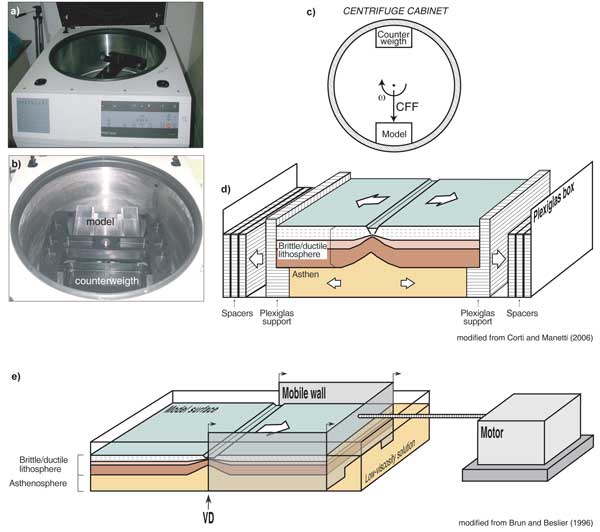
Figure 1: Experimental set-ups for centrifuge (a-d) and natural-gravity (e) models (modified from Brun & Beslier, 1996 and Corti & Manetti, 2006).
Modeling results and comparison with the East African Rift System
The model results and their comparison with selected examples from both the Western (Tanganyika, Malawi rifts) and Eastern (Ethiopia, Kenya rifts) branches of the East African Rift suggest the following different evolutionary stages of continental narrow rifting:
Early continental extension
Rift location is controlled by reactivation of lithospheric-scale pre-existing weaknesses that strongly localise deformation. Initial rifting is characterized by the activation of widely-spaced and large-offset boundary faults that give rise to subsiding basins (Figure 2). These can be strongly asymmetric at places (Figure 3).
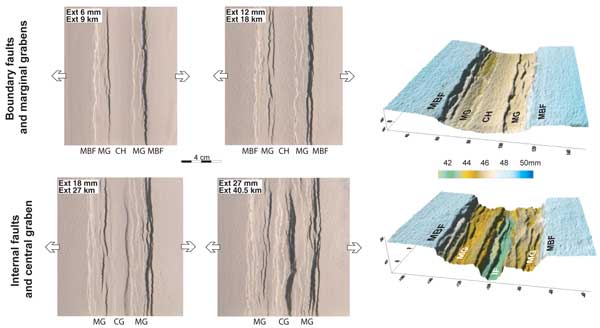
Figure 2: Evolution and pattern of deformation during orthogonal rifting, illustrated as top-view photos (left-central panels) and 3D visualization of digital elevation models of the model surface (right panels; modified from Agostini et al., 2009).
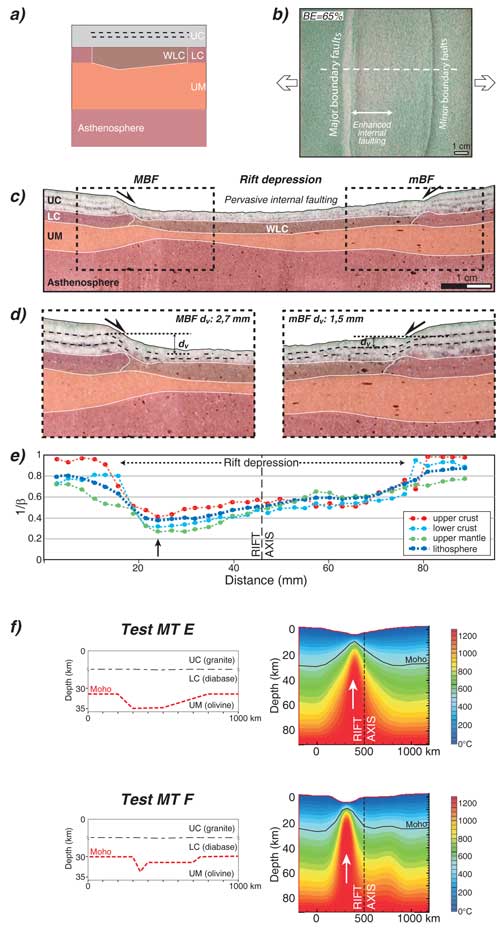
Figure 3: Effect of a pre-existing Moho topography in the asymmetric thinning geometry of the continental lithosphere, from analogue models by Corti & Manetti (2006) (a-e) and numerical models by Corti et al. (2003) (f).
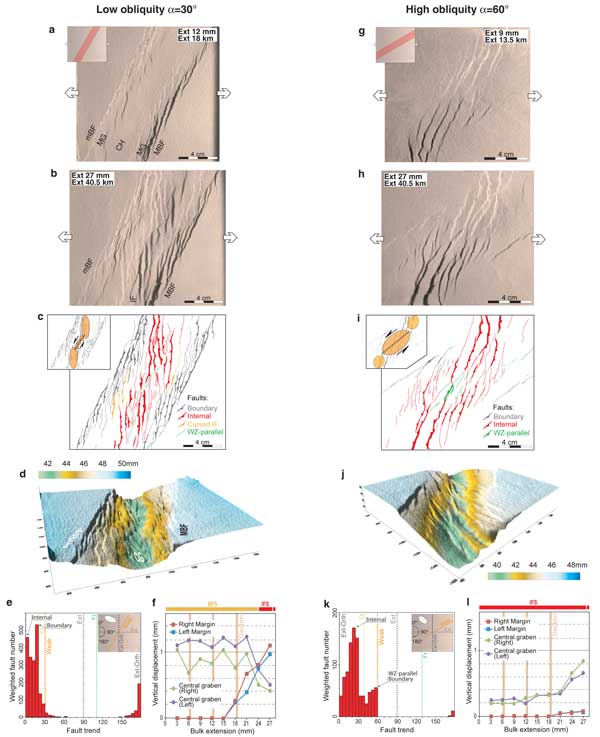
Figure 4: Evolution and deformation pattern during low- (a-f) and high-obliquity (g-l) rifting (from Agostini et al., 2009). Click here or on figure for enlargement.
The architecture of rift faults and basins is controlled by:
- the orientation of the lithospheric weaknesses wrt the extension direction (giving rise to orthogonal or oblique rifting), and;
- the presence of pervasive and/or discrete inherited fabrics with variable orientation with respect to the rift trend control (Figure 4).
In these initial phases, widespread magmatism may encompass the rift, with volcanic activity localised at major boundary faults, transfer zones and limited portions of the rift shoulders (off-axis volcanism).
From early to mature rifting
A change in deformation distribution is observed for progressive extension, with an inward narrowing of the volcano-tectonic activity characterised by a transition from deformation at rift margins to faulting in the rift centre (Figure 2). This documents a variation in deformation style from few, widely-spaced, large-offset boundary faults at the rift margins to dense fault swarms affecting the rift floor (Figure 5). At this stage, a strong focusing of the magmatic activity occurs within the in-rift fault segments.
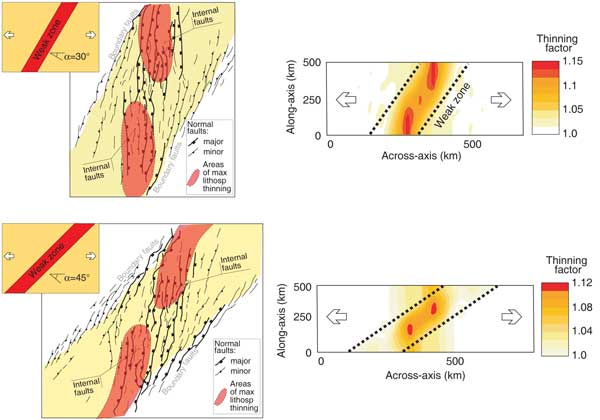
Figure 5: Patterns of lithospheric thinning in analogue (left panels) and numerical (right panels) models of oblique rifting (modified after Van Wijk, 2005 and Corti, 2008).
Interaction between magmatic and tectonic processes during continental break-up
The strong focusing of the tectono-magmatic activity within the in-rift fault swarms gives rise to magmatic segments where a strong feedback between deformation and magmatism develops (Figure 6). The thinned lithosphere is strongly modified and weakened by the extensive magma intrusion, and extension is facilitated and accommodated by a combination of magmatic intrusion, dyking and faulting in a self-reinforcing process that facilitates the rupture of the continental lithosphere. At this stage, magmatic segments (as for instance in the Northern Main Ethiopian Rift) act as incipient slow-spreading mid-ocean spreading centres, developing within a lithosphere that is transitional between continental and oceanic (Figure 7).
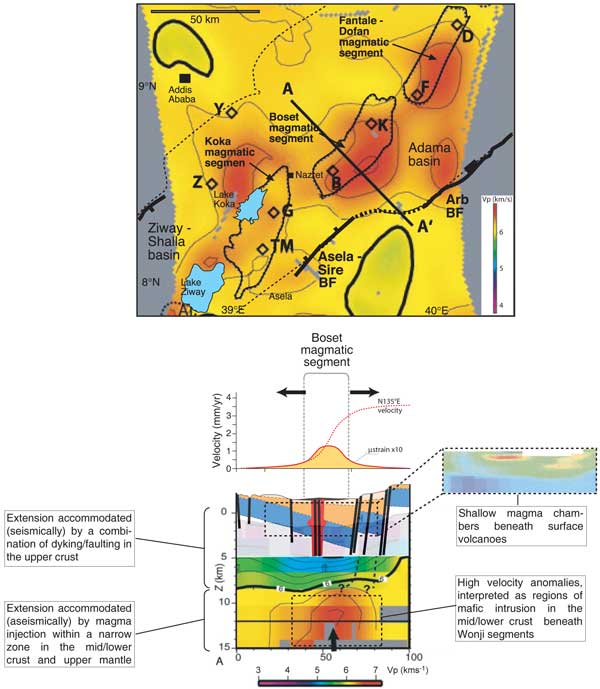
Figure 6: Structure and distribution of deformation in the magmatic segments of the northern Main Ethiopian Rift.
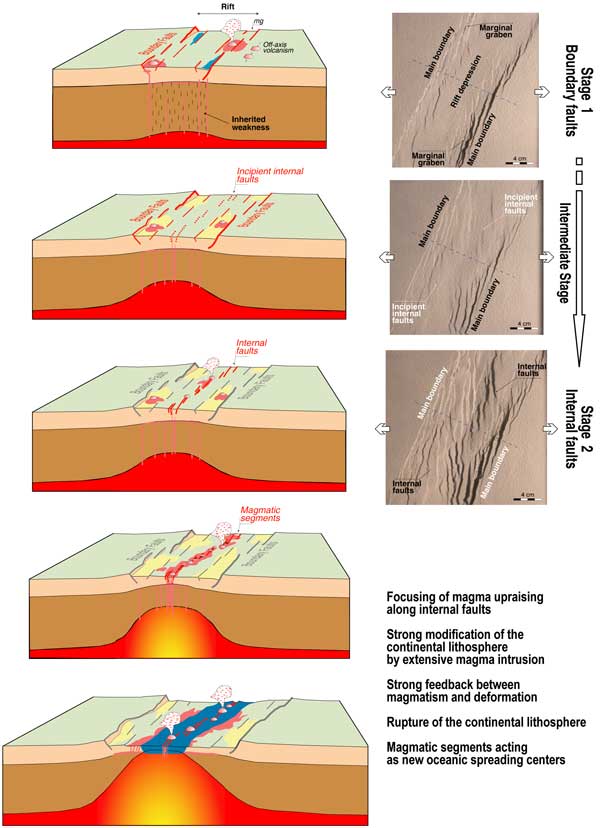
Figure 7: Evolution of continental rifting based on the comparison between modelling results and the Main Ethiopian Rift example.
Conclusions
Continental narrow rifting is a complex geodynamical process in which the thermo-mechanical response of the continental lithosphere to extension is influenced by several parameters (e.g., inherited structure, kinematics, magmatism). Lithospheric-scale analogue models are currently able to realistically reproduce a wide range of first-order characteristics of this process. This is illustrated by the successful comparison of model results with a wide range of selected natural examples from continental rifts worldwide as documented, for example, in Corti et al. (2003), Corti & Manetti (2006) and Corti (2008). This technique is a powerful tool to analyze the large-scale structural response of the brittle/ductile continental lithosphere to extension, although it is still far from being able to reproduce all the complex processes characterizing continental rifting, such as the complex tectono-magmatic events observed at the end of the rifting cycle.
References
-
Agostini, A., Corti, G., Zeoli, A., Mulugeta, G., 2009. Evolution, pattern and partitioning of deformation during oblique continental rifting:Inferences from lithospheric-scale centrifuge models. Geochemistry, Geosphysics, Geosystems, 10, Q11015, doi:10.1029/2009GC002676.
-
Brun, J.-P., Beslier, M.O., 1996. Mantle exhumation at passive margins. Earth and Planetary Science Letters, 142, 161-173.
-
-
-
Corti, G., Van Wijk, J., Bonini, M., Sokoutis, D., Cloetingh, S., Innocenti, F., Manetti, P., 2003. Transition from continental break-up to punctiform seafloor spreading: how fast, symmetric and magmatic. Geophysical Research Letters, 30 (12), 1604, doi:10.1029/2003GL017374.
-
Ebinger, C., 2005. Continental breakup: The East African perspective. Astronomy and Geophysics, 46, 2.16-2.21.
-
Ramberg, H., 1981. Gravity, deformation and the Earth’s crust: London, Academic Press, 452 pp.
-
Van Wijk, J.W., 2005. Role of weak zone orientation in continental lithosphere extension. Geophysical Research Letters, 32, doi:10.1029/2004GL022192.
last updated 13th March, 2012 |
